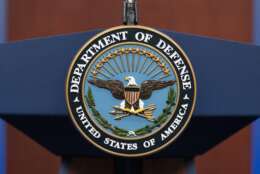Technology
-
In the realm of federal cybersecurity, change is both inevitable and necessary. The urgency of President Biden's 2021 Executive Order to implement a zero trust architecture by September 2024 has set the stage for a pivotal transformation. Yet, as the deadline draws near, it's apparent that while the directive's intent is clear, the path to its realization is fraught with complexity and challenges.
October 12, 2023 -
Army platforms depend on software, and software has to run on the often old or limited hardware mounted aboard ground vehicles.
October 12, 2023 -
Carol Woody, principal researcher for the Software Engineering Institute at Carnegie Mellon University, said focusing exclusively on SBOMs can run the risk of missing the other half of the problem: How is the software purchaser going to use it, and what risks are inherent in that use?
October 12, 2023 -
This new rule gives the Federal Acquisition Security Council the ability to tell contractors when to exclude or remove a product deemed risky.
October 11, 2023 -
In the months following the arrest of Airman 1st Class Jack Teixeira, a member of the Massachusetts Air National Guard, for leaking national security secrets to his friends on Discord, the Defense Department has released new policies and procedures for how it handles classified information.
October 11, 2023 -
You can't manage what you can't measure. That's the idea behind a professional association known as the Factor Analysis of Information Risk (FAIR) Institute. The group seeks to advance quantitative measurement and management of risk to information, including in federal organizations.
October 11, 2023 -
In today's Federal Newscast: Some feds in the Evergreen State might soon get a boost in locality pay. The new Army chief of staff targets "the network" as his top modernization priority. And an IT leader for the Marine Corps has moved on.
October 11, 2023 -
Laurence Brewer, the chief records officer for the National Archives and Records Administration, said a new bulletin and a new report demonstrates ongoing challenges to collecting records from emerging technologies.
October 10, 2023









